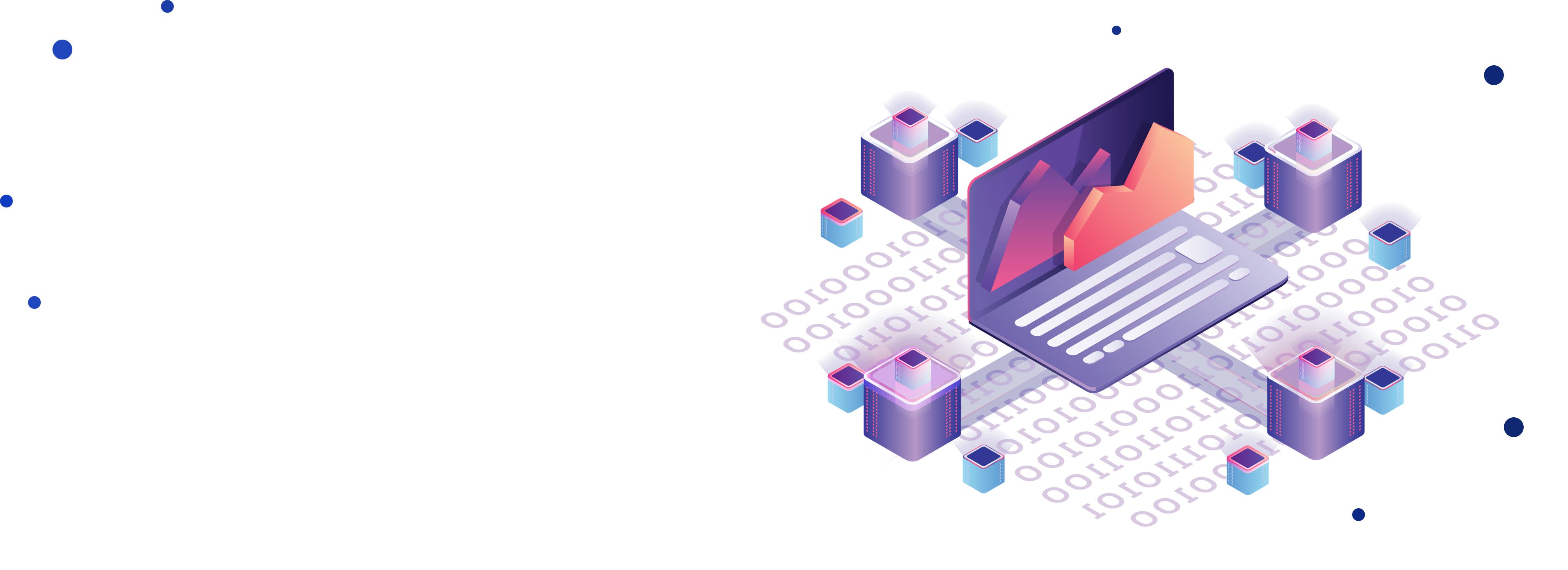Why does Nodata have a revolutionary architecture?
Based on 5 years of work, our experts have strived to build a new architecture for analytics platform, in keeping with the times.

1. Observation: The analytical systems of today's architectures
The analytical systems of today's architectures are based on the three-tier model of the applications of the 1990s: Client / Server.
In this type of architecture, the description and graphical rendering (business rules) are embedded and executed in the server.
For example, analytical systems often use server resources for graphical rendering of indicators and charts.
However, in order to cope with an increase in the number of consultations and data, there are only two possibilities:
- To increase the power of the central server
- duplicate on several servers in a cluster, to spread the load
In an analytical system, the objective is to apply calculations to the data in order to derive and exploit the desired KPIs.
With the three-tier architecture, there are two ways to make these calculations:
- “In memory" calculations: this method consists of making a copy of the data in the database on a server with proprietary technology, which will perform the calculations and pre-calculations in RAM.
- Calculations in databases: this method consists of making all the calculations directly in the database via queries and extracting only the results. Each modification of the calculation, such as for example a simple sort or addition of filter on a result, requires to redo the whole query.
This architecture was relevant in the context of the 1990s. At that time, it was a question of having the power of a server available so that each thin client could use it on an ad hoc basis.
The arrival of the cloud in the following years did not revolutionize this model, which was simply duplicated, by outsourcing the server on the Internet.
Today, analytical solutions have kept this mode of operation, not taking into account the evolution of the whole technological environment.

2. Nodata: a revolutionary architecture
Based on this observation, Nodata's R&D teams have been working on a new approach, enabling them to be more in tune with technical developments and the widespread use of the Cloud and its applications.
Nodata offers a revolutionary architecture that optimizes processing by distributing it over all available resources: the database, the server and, for the first time, the client.
In addition to this optimization of calculation methods, Nodata also distributes the functional rules between the client web browser and the Nodata server.

3. A complete alternative
Nodata is the first solution to freely optimize the use of resources (and therefore costs).
All market players are based on the three-tier architecture. They propose and impose to process data either "In Memory" or in the database, thus leaving no flexibility and totally ignoring the modern environment in which their customers evolve.
By offering the possibility of choosing the calculation method, and adding a new one for the first time via the thin client, Nodata breaks free from the three-tier architectural straitjacket and opens up the field of possibilities.
From now on, it is possible to select the most relevant solution according to usage and therefore considerably increase performance.
By adding to this the hosting of functional rules on its cloud, leaving the architectural resources entirely dedicated to calculations on data, Nodata completes its revolution and positions itself as the analytical system most in tune with the times.
4. Why choose Nodata?
Thus, Nodata offers an innovative and optimizable architecture.
This advanced optimization not only significantly improves performance but also reduces costs.
Indeed, with Nodata, there is no need for an additional server dedicated to the analytical system. The existing environment and the use of thin client resources provide the computing power.
Finally, this flexible architecture allows the company's analytical system to evolve as needs grow. No more need to buy a high-powered machine if you only want to use 10% of it in real-life situations!